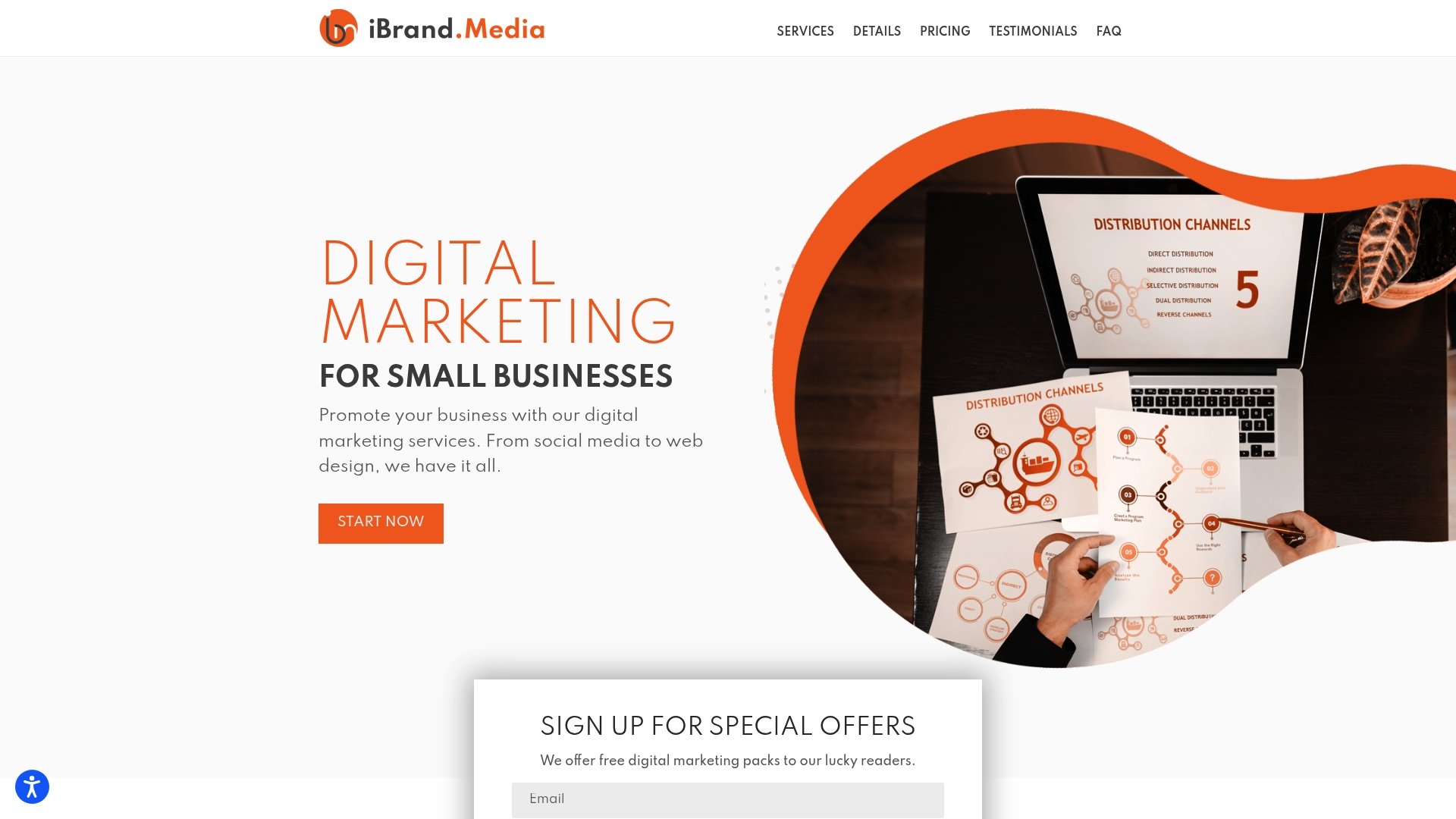Over 40 percent of local businesses miss out on valuable customers because they overlook targeted strategies. The way your business connects with the community can shape both visibility and lasting success. When you know exactly who your audience is and how to reach them, every step becomes more effective. This guide lays out practical actions you can use to attract more local customers, improve your online presence, and build real community loyalty.
Table of Contents
- Step 1: Identify Your Ideal Local Audience
- Step 2: Optimize Your Local Online Presence
- Step 3: Leverage Local SEO And Listings
- Step 4: Engage Customers With Local Promotions
- Step 5: Measure Results And Refine Strategies
Quick Summary
| Key Point | Explanation |
|---|---|
| 1. Identify your local audience carefully | Use demographic and behavioral data to understand your ideal customers in the local market. |
| 2. Optimize your online presence | Claim and complete your Google Business Profile to enhance local visibility and engagement. |
| 3. Leverage local SEO techniques | Maintain consistent business information and generate local reviews to improve search rankings. |
| 4. Create authentic local promotions | Develop offers that genuinely benefit the community, fostering customer loyalty and engagement. |
| 5. Regularly measure and refine your strategies | Track key performance indicators monthly to adjust and optimize your marketing efforts continuously. |
Step 1: Identify Your Ideal Local Audience
Targeting local customers starts with understanding exactly who they are and what makes them unique. According to research from Wikipedia, psychological profiles can reveal critical insights into regional audience characteristics that help businesses pinpoint their most promising customer segments.
To effectively identify your ideal local audience, you need a strategic approach that combines demographic research, behavioral analysis, and local market understanding. Begin by examining key characteristics like age range, income levels, professional backgrounds, and lifestyle preferences specific to your geographic area. ArXiv highlights the significance of local information networks in understanding specific audience segments.
Here are practical steps to define your local audience:
- Analyze your current customer database for common traits
- Review local census data for demographic insights
- Survey existing customers about their preferences and needs
- Study local competitors and their customer base
- Create detailed customer personas representing your target market
Pro tip: Do not make assumptions. Use real data and direct feedback from your local community to build an accurate audience profile. The more precise your understanding, the more effectively you can tailor your marketing strategies to attract and retain local customers.
Step 2: Optimize Your Local Online Presence
Building a strong local online presence is essential for attracting nearby customers and establishing your business as a community leader. According to ArXiv, focusing on local online collaboration structures can significantly enhance your digital engagement and visibility in your specific geographic area.
To optimize your local online presence, start by claiming and fully completing your Google Business Profile guide across all relevant platforms. Research from Wikipedia suggests adapting your digital content to improve visibility in generative search results means creating highly targeted local information.
Key strategies for local online optimization include:
- Create location specific content
- Use local keywords consistently
- Add accurate business contact details
- Encourage customer reviews
- Optimize website for local search terms
- Use schema markup for local businesses
Pro tip: Consistent and accurate information across all online platforms builds trust with both potential customers and search engines. Update your business details regularly and respond promptly to customer interactions to demonstrate active community engagement.

Step 3: Leverage Local SEO and Listings
Local SEO is your strategic pathway to becoming the go-to business in your community. According to Wikipedia, successful local search optimization involves precise tactics like maintaining consistent name, address, and phone (NAP) information across all online platforms to improve local search visibility.
To effectively leverage local SEO, start by claiming and optimizing your local SEO guide on key platforms. Research from Semrush suggests that active community participation can dramatically boost your search rankings through positive online reviews and local backlinks.
Critical strategies for local SEO and listings include:
- Optimize Google Business Profile completely
- Ensure NAP consistency across all directories
- Generate authentic local customer reviews
- Create location specific website content
- Build local backlinks through community engagement
- Use local keywords strategically
- Add schema markup for local businesses
Pro tip: Treat local SEO as an ongoing process. Regularly update your business information, respond to reviews, and stay engaged with your local community to maintain and improve your online visibility.
Step 4: Engage Customers with Local Promotions
Local promotions are the secret weapon for transforming casual customers into loyal community supporters. When designed strategically, these promotions not only drive immediate sales but also build long lasting relationships with your local customer base.
To create compelling local promotions, leverage local advertising strategies that resonate with your specific audience. Focus on creating offers that feel personal and directly beneficial to your local community.
Effective local promotion strategies include:
- Host community events and offer exclusive discounts
- Create time limited neighborhood specials
- Develop loyalty programs with local rewards
- Partner with nearby businesses for cross promotions
- Use geo targeted social media advertising
- Offer seasonal local customer appreciation deals
- Design referral programs with local incentives
Pro tip: Make your promotions feel authentic and genuinely valuable. Customers can quickly detect marketing gimmicks, so ensure your promotions solve real problems or provide meaningful value to your local audience. The most successful promotions feel like a gift rather than a sales pitch.
Step 5: Measure Results and Refine Strategies
Tracking and analyzing your local marketing performance is the key to continuous improvement and sustainable business growth. According to Patrick Lowenthal, conducting regular audits of your online presence helps you strategically refine your marketing approach.
To effectively measure your results, leverage tracking digital marketing success techniques that provide comprehensive insights into your local customer engagement. Focus on key performance indicators that directly reflect your business objectives and local market impact.
Critical metrics to track include:
- Customer acquisition cost
- Conversion rates from local campaigns
- Website traffic from local searches
- Social media engagement rates
- Number of new customer reviews
- Return on advertising spend
- Customer lifetime value
Pro tip: Treat data analysis as an ongoing process. Set aside time monthly to review your metrics, identify trends, and make incremental adjustments. The most successful businesses view performance measurement as a continuous cycle of learning and optimization rather than a one time annual review.

Take Your Local Marketing to the Next Level with Proven Digital Strategies
Targeting local customers can feel overwhelming when trying to stand out and grow rapidly. You want clear guidance on attracting your ideal audience, optimizing your online presence, and boosting your visibility in a competitive community. Understanding key challenges like local SEO, authentic customer engagement, and tracking real results is critical. This is where a tailored digital marketing partner becomes invaluable.
At Ibrandmedia, we specialize in helping small to medium-sized businesses achieve fast growth through customized local marketing solutions. Our approach combines expert SEO optimization, local listings management, and targeted promotions that turn prospects into loyal customers. We understand the importance of accurate online information, customer review management, and continuous performance tracking highlighted in articles like this one.
Explore our Uncategorized services to see how we tailor strategies specifically for local markets.

Act now to stop guessing and start growing your local customer base with confidence. Visit ibrand.media to request a personalized plan designed to deliver quick, measurable results that fuel lasting business success.
Frequently Asked Questions
How can I identify my ideal local audience for my business?
Start by analyzing your current customer database to spot common traits such as age, income, and lifestyle preferences. Conduct surveys or research local census data to gain deeper insights within 30 days.
What steps should I take to optimize my local online presence?
Claim and complete your Google Business Profile on all relevant platforms. Ensure your business contact details and location-specific content are accurate and appealing to boost your visibility in local searches.
How do I effectively leverage local SEO to attract customers?
Maintain consistent name, address, and phone (NAP) information across all online directories. Actively engage with your local community and encourage authentic customer reviews to significantly improve your search rankings.
What types of local promotions can I create to engage customers?
Consider hosting community events and offering exclusive discounts that resonate with local interests. Implement time-limited neighborhood specials or referral programs with local incentives to encourage customer loyalty.
How can I measure the success of my local marketing efforts?
Track key performance indicators such as conversion rates from local campaigns and the number of new customer reviews. Dedicate time each month to review these metrics, allowing you to identify trends and refine your strategies effectively.
What is the best way to refine my local marketing strategies?
Treat data analysis as an ongoing process by conducting regular audits of your online presence. Based on the insights gained, make incremental adjustments to your strategies to improve engagement and customer acquisition continuously.
Recommended
- Top Benefits of Local Advertising for Small Businesses in 2025 | Ibrandmedia
- Top Benefits of Local Marketing for Small Businesses 2025 | Ibrandmedia
- Targeting Local Customers Online: Proven Strategies for 2025 | Ibrandmedia
- What Is Local Marketing? Simple Guide for Small Businesses 2025 | Ibrandmedia
- The Importance of Local SEO 2023- Go online Now
- Local Marketing for SMEs: Power of Location-Based Innovation

Recent Comments